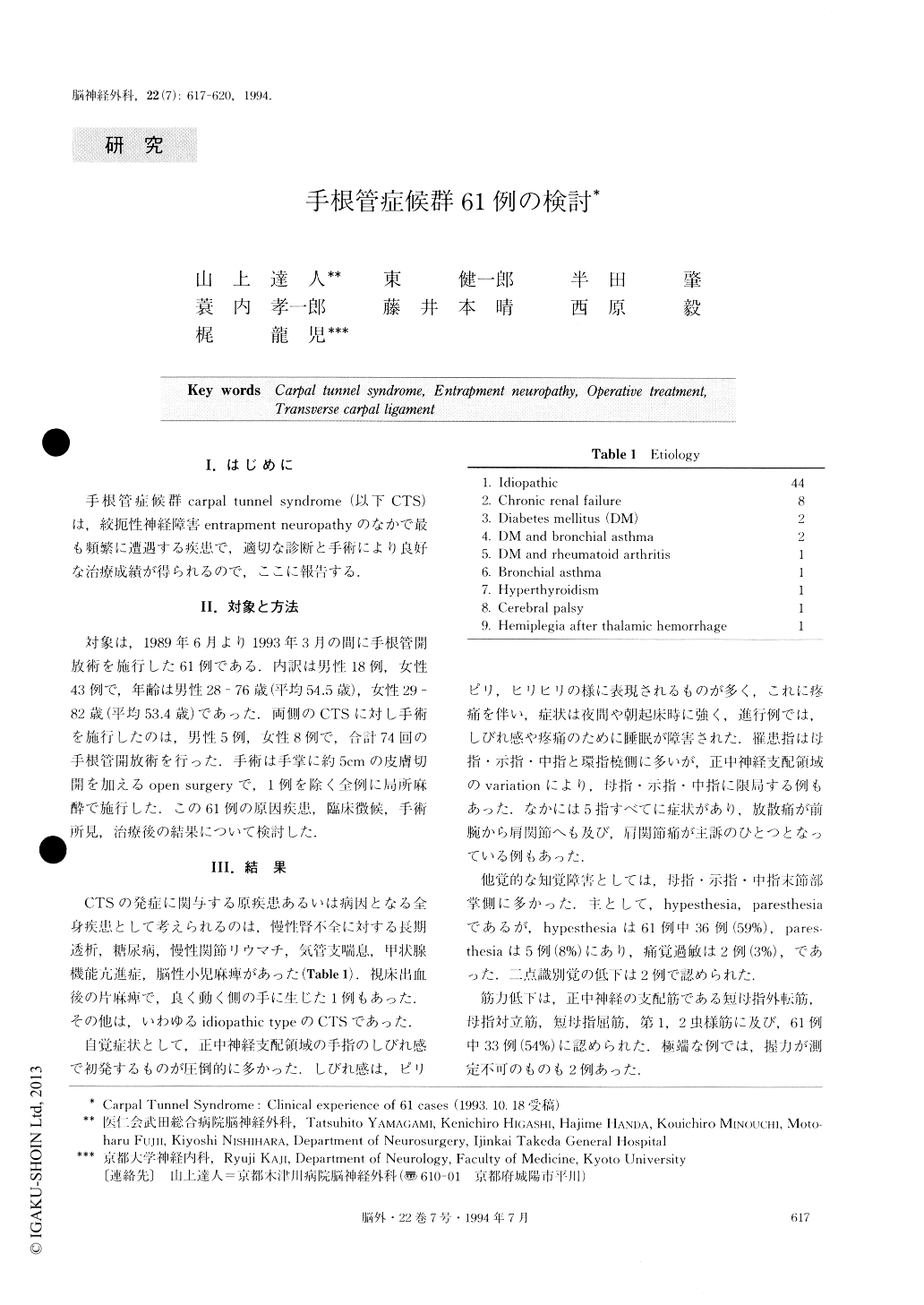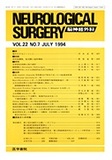Japanese
English
- 有料閲覧
- Abstract 文献概要
- 1ページ目 Look Inside
I.はじめに
手根管症候群carpal tunnel syndrome(以下CTS)は,絞扼性神経障害entrapment neuropathyのなかで最も頻繁に遭遇する疾患で,適切な診断と手術により良好な治療成績が得られるので,ここに報告する.
Carpal tunnel syndrome (CTS) is the most frequent entrapment neuropathy. Appropriate diagnosis and therapy contribute to obtaining good results.
We performed carpal tunnel release in 61 patients in- cluding 8 cases with chronic renal failure. They in-cluded 18 males and 43 females. Age distribution was from 28 to 76 years of age among the males, and from 29 to 82 years of age among the female patients. Bi-lateral operations were performed in 13 cases (male 5, female 8). Operations were carried out with local anes-thesia in all cases except one. The skin incision was ab-out 5cm on the palmar skin. Hypertrophy of the transverse carpal ligament was found in all cases, with a thickness of 4mm on the average. Usually, the ligament was as hard as gum in consistency. There were also hypertrophy of the sub-cutaneous connective tissue and palmar aponeurosis or aberrant muscle in some cases. In CTS following long-term hemodialysis for chronic renal failure, the liga-ment was very hard and appeared to be partly calcified.All patients improved clinically after the operation. We should understand the characteristic clinical symptoms and signs of CTS. Clinical worsening was prominent at night and/or early in the morning. Definite diagnosis was performed by electrophysiological means.
Operative indications are 1) cases whose daily activi-ties are disturbed due to severe symptoms with pro-gressive aggravation, 2) cases with muscle weakness in the distribution of the median nerve, 3) cases with the-nar atrophy, 4) cases which, electrophysiologically, are suspected of demyelination of the median nerve. As there were many unpredictable anomalies and varia-tions among the lesions, correct decompression of the median nerve under direct vision is necessary during surgery

Copyright © 1994, Igaku-Shoin Ltd. All rights reserved.


